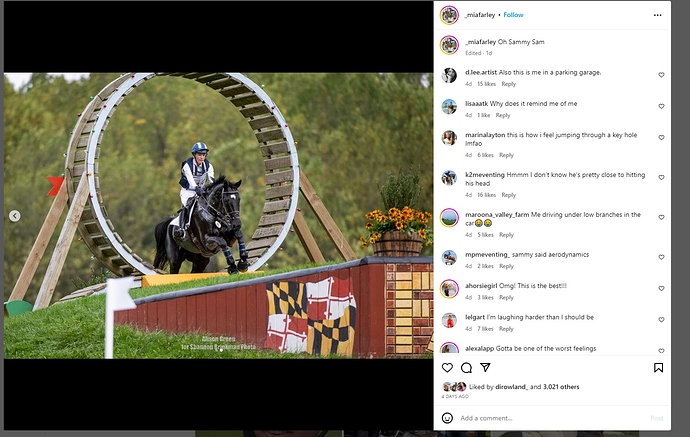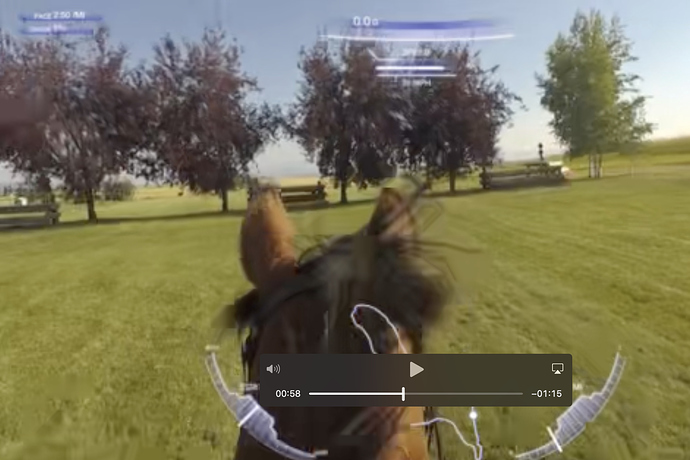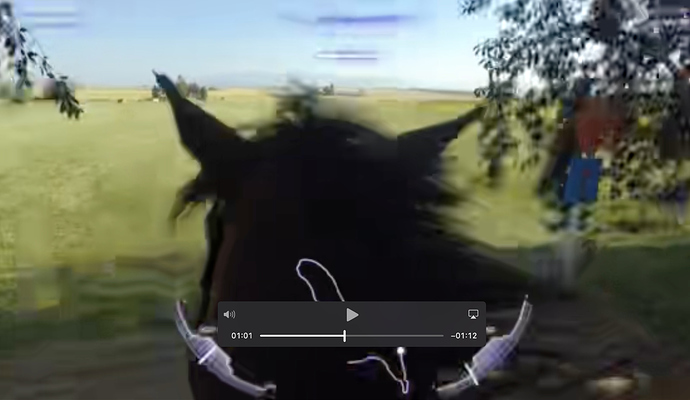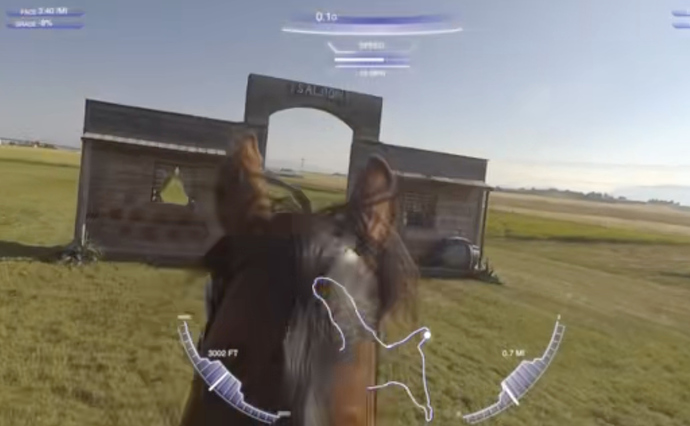The first picture frame I ever rode was as a 13yo novice rider, in a clinic. It was a training level picture frame, I had no idea I should ride it differently than any other ramp. We’d done a “bus stop” before, with a very tall lattice top. This picture frame had a noticeable banner board, and to my utter surprise my steady XC machine STOPPED at our first attempt. He inched up to it, sticking his nose out and ducking his ears, convinced he wouldn’t fit through. At the clinician’s suggestion, I let him stick his head and neck through the opening, gave him a pat, and approached again. I rode it very strongly and he jumped it, and I felt my first “duck” as he flattened himself and flinched over. Big pats, good boy. Did it one more time, and he jumped it very confidently and normal. I learned a lesson that day, though: even the bravest horse may hesitate at a framed fence.
My next horse never noticed framed fences up through prelim. No ducking at all. My mare after that went up to Advanced, and jumped a number of keyholes and bushy topped fences. She occasionally flinched her ears and squinted through the narrow ones, but always brave, safe, and tidy. My gelding after her also went through Intermediate and FEI, and sometimes he ducked a little and sometimes he wouldn’t. Back in all these days, it was RARE to find a keyhole to school. They just weren’t built at schooling venues, and you really only encountered them in competition. Most of the time horses at Intermediate and Advanced were brave and experienced enough to jump it safely; but there were definitely some eliminations simply because a green horse couldn’t answer the question. Now in “prime” eventing areas (II, III) it is easy to introduce horses to the concept while schooling at a lower level.
Based upon my experience with a number of different horses, I disagree that “once a duck, always a duck.” I think it is very normal for a horse to duck at its first attempt over a frame or keyhole. It may even duck the second time. But once it understands the question, it can jump it safely as any other XC fence. Could there be a mistake? Sure. Just like there could be a mistake at a plain table or ramp anywhere else on course.
If you have a horse who is forever ducking and hesitant at a keyhole, maybe you don’t have an event horse. If you have a ditchy horse, or a water-phobic horse, you may never completely conquer the issue and perhaps need to find the horse a more suitable job.
Keyholes are not as fundamental to eventing as water and ditches, and I’m not willing to die on the Keyhole Hill fighting to keep them on course. Personally they aren’t my favorite jump, and I will fully admit you can’t always predict how it will ride. But tests of bravery and willingness are fundamental to eventing, and I would rather jump a keyhole here or there than have XC turn into nothing but skinnies, corners, and wedges in a show jump contest. Riding to a keyhole is one instance on course where you have to hold a line but must ride boldly; the horse isn’t going to run out, it will either jump through or it won’t. It rewards forward thinking, forward riding (not picking and pulling), and the rider must have a secure position to help the horse if it needs a “throw your heart over first” moment.







